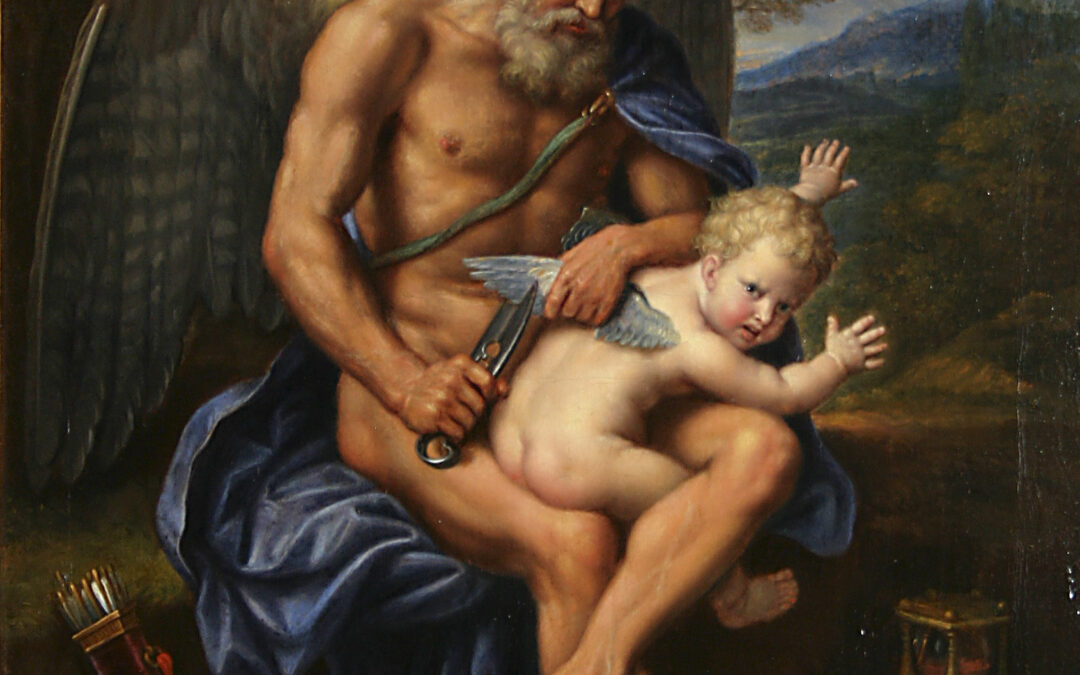
by Moe | Oct 14, 2021 | Gods & Goddesses, Mind Control Research, Satanism
In Greek mythology, Kronus (Cronus or Kronos) was the Lord of Justice, Evil, and the Harvest, and in Rome, he was allegorically called Saturn. He was the leader of the first generation of the Titans who overthrew his father, Ouranos Our-anus, and ruled during the mythological Golden Age.
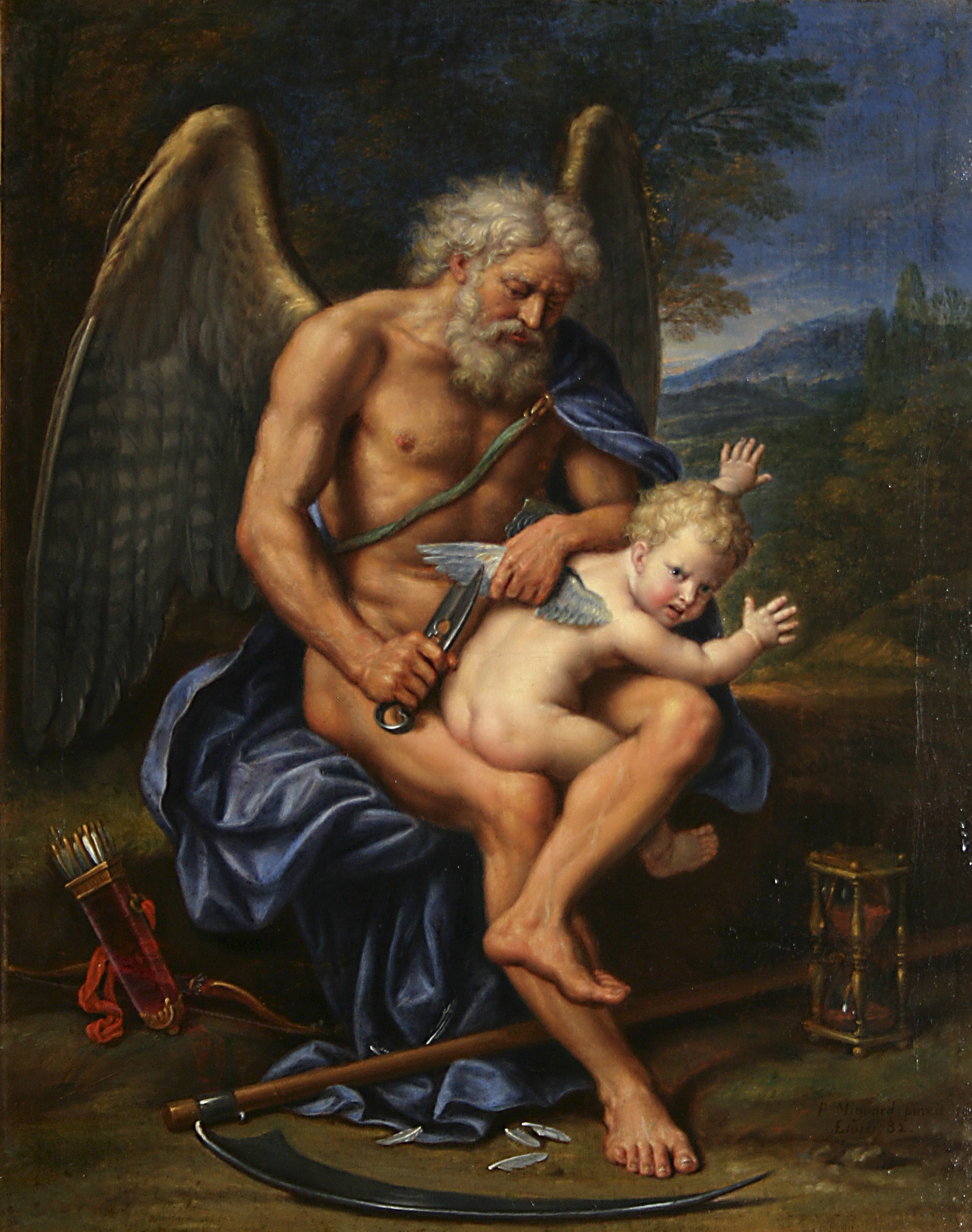
Yes. it is like that!
To prevent any of his sons or daughters from ruling in his stead, he had a habit of “eating them.”
The first source in history to give us the origins of this myth is the Phoenician historian and a priest of Byblos, Sanchuniathon (Phoenician: 𐤎𐤊𐤍𐤉𐤕𐤍) who tells us Môt means Death but also represents Kronus. He says some people call it by the name Ilus (Mud), which is described as a “putrefaction of a watery mixture,” from this sprung all the seed of the creation and the generation of the universe. Sanchuniathon also explains that this Môt AKA Ilus (Mud) ‘s name is also Kronus, whose father is Our-anus, situated in the middle of the earth. He had written;
“In the thirty-second year of his power and reign, Ilus, who is Kronus, having laid an ambuscade for his father Ouranus in a certain place situated in the middle of the earth, when he had got him into his hands dismembered him over against the fountains and rivers. There Ouranus was consecrated, and his spirit was separated, and the blood of his parts flowed into the fountains and the waters of the rivers; and the place, which was the scene of this transaction, is shewed even to this day.”
The history from Sanchuniathon can be verified in the Hebrew (Phoenician) Scripture, Môt (Maweth, Mot, Mavet(h) means Death and is sometimes personified as a devil or angel of Death (e.g., Habakkuk 2:5; Job 18:13). In both the Book of Hosea and the Book of Jeremiah, Maweth/Mot is mentioned as a deity to whom Yahweh can turn over Judah as punishment for worshiping other gods. Philo of Byblos described môt (Muth), as the equivalent of both Thanatos (Death personified) and Pluto.
We learn from Plato that he bounds his victims in his famous chains that are inescapable.
“[Has] Kronos (Cronus) bound them with his famous chains?” His chains are inescapable. (Plato, Cratylus 403e)
Where does he keep these people in chains?
Hesiod says that Kronos and the Titans live under Tartarus; “The Titanes under Tartaros (Tartarus) who live with Kronos (Cronus).” (Hesiod, Theogony 820)
Homer also writes in the Ilias that Tartarus binds them; “The undermost limits of earth and sea, where Iapetos and Kronos seated have no shining of the sun-god Hyperion to delight them nor winds’ delight, but Tartaros stands deeply about them.” (Iliad 8. 479)
Tartarus in Greek mythology is the deep abyss and a type of underground dungeon of torment and suffering for the wicked and as the prison for the Titans and, in later myths, for mortals who committed unforgivable sins. According to the Greek poets, Homer and Hesiod, Tartarus is a type of spherical force that reaches the great cosmic pit beneath the earth. It is located “as far beneath the house of Hades as from earth the sky lies, and he is both a deity (god or force) and a place in the underworld.”
Hesiod (c. 700 BCE) depicts it as Misty Tartarus’, stating that it was “as far below the earth as heaven is from the earth” (722-25). He describes Tartarus “as a vast chasm, both dismal and dank and a place of decay,” and states, “Tartarus is one of the first beings to have emerged at the creation of the universe and was the opposite of Gaia (Earth).” Hesiod said it is the unfruitful sea (pontos) where there are shining gates and an immoveable threshold of bronze having unending roots, and it is grown of itself.”
In the Orphic cosmogony, Kronus was the incorporeal and primordial god of time who emerged self-formed at the dawn of creation. He was often depicted in serpentine form, with three heads–a man, a bull, and a lion. His consort, the serpentine goddess Ananke (Inevitability), enveloped the primordial world-egg in their coils and split it apart to form the ordered universe of earth, sea, and sky. After this act of creation, the couple circled the cosmos driving the rotation of heaven and the eternal passage of time.
In the Orphic theogonies from the 2nd Century B.C., genealogical works similar to the Theogony of Sanchuniathon and Hesiod details the beginning of this myth concealing this science;
“Originally there was Hydros (Water), he [Orpheus] says, and Mud, from which Ge (Gaea, the Earth) solidified : he posits these two as first principles, water and earth . . . The one before the two [Thesis, Creation], however, he leaves unexpressed, his very silence being anintimation of its ineffable nature.
The third principle [Khronos (Chronos), Time] after the two was engendered by these–Ge (Earth) and Hydros (Water), that is–and was a Serpent (Drakon) with extra heads growing upon it of a bull and a lion, and a god’s countenance in the middle; it had wings upon its shoulders, and its name was Khronos (Chronos, Unaging Time) and also Herakles (Heracles). United with it was Ananke (Inevitability, Compulsion), being of the same nature, or Adrastea, incorporeal, her arms extended throughout the universe and touching its extremities.” (Orphica, Theogonies Fragment 54 from Damascius C3rd – C2nd B.C.)
Orphica, Rhapsodies Fragment 66 :
“This Khronos (Chronos, Unaging Time), of immortal resource, begot Aither (Aether, Light) [upper air] and great Khaos (Chaos, the Chasm) [lower air], vast this way and that, no limit below it, no base, no place to settle. Then great Khronos fashioned from (or in) divine Aither (Aether) a bright white egg [from which Phanes was born].”
Orphica, Epicuras Fragment (from Epiphanius);
“And he [Epicurus] says that the world began in the likeness of an egg, and the Wind [the entwined forms of Khronos (Chronos, Time) and Ananke (Inevitability)] encircling the egg serpent-fashion like a wreath or a belt then began to constrict nature.
As it tried to squeeze all the matter with greater force, it divided the world into the two hemispheres, and after that, the atoms sorted themselves out, the lighter and finer ones in the universe floating above and becoming the Bright Air [Aither (Aether)] and the most rarefied Wind [probably Khaos (Chaos, Air)], while the heaviest and dirtiest have veered down, become the Earth (Ge) [Gaia], both the dry land and the fluid waters [Pontos the Sea]. And the atoms move by themselves and through themselves within the revolution of the Sky and the Stars, everything still being driven round by the serpentiform wind [of Khronos and Ananke].”
As it relates to the humans, Hesiod, said the Kronus was the youngest son of Rhea and the most terrible of all her children;
“She [Gaia, Earth] lay with Ouranos (Uranus, Sky) and bare deep-swirling Okeanos (Oceanus), Koios (Coeus) and Krios (Crius) and Hyperion and Iapetos (Iapetus), Theia and Rhea, Themis and Mnemosyne and gold-crowned Phoibe (Phoebe) and lovely Tethys. After them was born Kronos (Cronus) the wily, youngest and most terrible of her children, and he hated his lusty sire . . .
And he [Ouranos] used to hide them all [Hekatonkheires (Hecatoncheires) and Kyklopes (Cyclopes), brothers of the Titanes] away in a secret place of Earth (Gaia) so soon as each was born, and would not suffer them to come up into the light: and Ouranos (Sky) rejoiced in his evil doing. But vast Gaia (Earth) groaned within, being straitened, and she made the element of grey flint and shaped a great sickle, and told her plan to her dear sons [the six Titanes].
And she spoke, cheering them, while she was vexed in her dear heart: ‘My children, gotten of a sinful father, if you will obey me, we should punish the vile outrage of your father; for he first thought of doing shameful things.’ So she said, but fear seized them all, and none of them uttered a word. But great Kronos the wily took courage and answered his dear mother: ‘Mother, I will undertake to do this deed.’
So he said: and vast Gaia (Earth) rejoiced greatly in spirit, and set and hid him in an ambush, and put in his hands a jagged sickle, and revealed to him the whole plot.” (Theogony 133 ff -trans. Evelyn-White) :
Ovid tells us about the human anatomical nature in Fasti that Kronus eats his children, and then they become “entombed in his bowels,” and then a mysterious stone in the form of Zeus gets lodged in what Ovid calls a gullet, which means his esophagus. He had written;
“Saturnus [Kronos (Cronus)] received this oracle: ‘Best of kings, you shall be knocked from power by a son.’ Jabbed by fear, he devours his offspring as they are born and entombs them in his bowels. Rhea often complained of much pregnancy and no motherhood and mourned her fertility.
The story of Cronus eating his children and his name also being Mot AKA Ilus (Mud) ‘s, which is a “putrefaction of a watery mixture,” whose father is Our-anus situated in the middle of the earth is interpreted by some people like me as an allegory to a specific aspect of time held within Cronus’ sphere of influence.
This sphere, I contend, deals with an ancient science that connects Kronus via the earth’s magnetic biosphere, as I explained in my essay, Human Magnetoreception: The Science of the Noosphere vs. the Animal Sphere to our Stomachs or Gi Tracts, which science has proved is our second brain – The Realm of Kronus. In Christianity, this is the devil’s lair, and Satan is chief of his legions of Demons, i.e., human beasts, which the Hebrews called Behemoths. It is Carl Jung’s collective unconscious.
As we learn from Apollonius Rhodius;
“A number of creatures whose ill-assorted limbs declared them to be neither man nor beast had gathered round her [Kirke (Circe) the witch] like a great flock of sheep following their shepherd from the fold, Nondescript monsters such as these, fitted with miscellaneous limbs, were once produced spontaneously by Ge (Gaea, the Earth) out of the primeval mud, when she had not yet solidified under a rainless sky and was deriving no moisture from the blazing sun. But Khronos (Chronos, Time), combining this with that, brought the animal creation into order.” (Argonautica 4. 673 ff trans. Rieu C3rd B.C.)
I believe that it can be considered as a type of animal mind or, Biblically speaking, the mind of the flesh i.e., Sarka that is connected to this “putrefaction of a watery mixture,” AKA fungi/molds whose sphere of influence via their endless mycelium (chains, fetters) and spores (seeds) is within Tartarus or within the earth underneath our feet.
As I have explained in many numerous essays, molds/fungi have been scientifically proven to cause illness, disease often from working within our bowels and also mental psychopathologies, which can influence our thoughts in a bad way, which may explain Cronus’ violent nature and without hesitation, he eats his children. He is often depicted holding a sickle or ravaging some human while still alive.
As Ovid relates, Kronus, with his anger stirs the mighty Titans who are imprisoned in a “black grove with a triple wall,” which would be a depiction of the molds/fungi’s legislating abilities of humankind. Ovid had written;
“Saturnus [Kronos (Cronus)] was thrust from his realm by Jove [Zeus]. In anger he stirs the mighty Titanes to arms and seeks the assistance owed by fate. There was a shocking monster born of Mother Terra (Earth) [Gaia], a bull, whose back half was a serpent. Roaring Styx [as an ally of Zeus] imprisoned it, warned by the three Parcae [Moirai, Fates], in a black grove with a triple wall.
Whoever fed the bull’s guts to consuming flames was destined to defeat the eternal gods. Briareus [or Aigaion, an ally of Kronos] slays it with an adamantine axe and prepares to feed the flames its innards [and so ensure the victory of the Titanes]. Jupiter [Zeus] commands the birds to grab them; the kite brought them to him and reached the stars on merit.”
The rule of Kronus is not indefinite. In the Greek Myths, we learn that he rules a “space in time” and is eventually conquered and bound by Zeus or Jove.
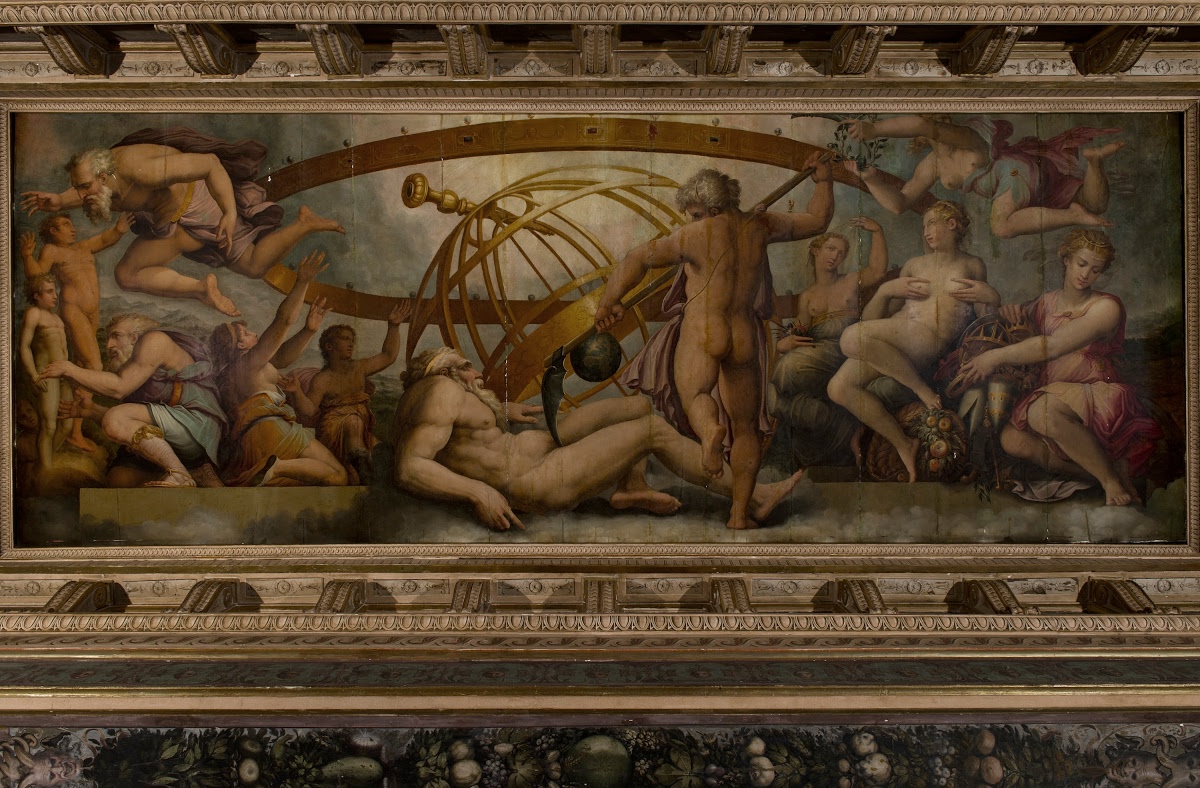
The Roman rhetorician C1st B.C., Cicero had written;
“Another theory also, and that a scientific one, has been the source of a number of deities, who clad in human form have furnished the poets with legends and have filled man’s life with superstitions of all sorts. This subject was handled by Zeno and was later explained more fully by Cleanthes and Chrysippus. For example, an ancient belief prevailed throughout Greece that Caelus (the Sky) [Ouranos (Uranus)] was mutilated by his son Saturnus [Kronos (Cronus)], and Saturnus himself thrown into bondage by his son Jove [Zeus]: now these immoral fables enshrined a decidedly clever scientific theory.
Their meaning was that the highest element of celestial ether or fire [Ouranos the Sky], which by itself generates all things, is devoid of that bodily part which required union with another for the work of procreation. By Saturnus [Kronos] again they denoted that being who maintains the course and revolution of the seasons and periods of time, the deity so designated in Greek, for Saturnus’ Greek name is Kronos (Cronus), which is the same as khronos, a space of time.
The Latin designation ‘Saturnus’ on the other hand is due to the fact that he is ‘saturated’ or ‘satiated with years’ (anni); the fable is that he was in the habit of devouring his sons–meaning that Time devours the ages and gorges himself insatiably with the years that are past. Saturnus is bound by Jove [Zeus] in order that Time’s courses might not be unlimited, and that Jove might fetter him by the bonds of the stars.” (Cicero, De Natura Deorum 2. 24 – trans. Rackham)
As the Greek Myths tell us, He was married to the “Goddess of the earth,” Rhea, by whom he became the father of Hestia, Demeter, Hera, Hades, Poseidon, and Zeus. Cheiron is also called a son of Kronus. (Hesiod. Theog. 137, 452, &c.; Apollod. i. 1. § 3, &c.) At the instigation of his mother, Cronus unmanned his father for having thrown the Cyclopes, who were likewise his children by Ge, into Tartarus. Out of the bloodshed sprang up the Erinyes. When the Cyclopes were delivered from Tartarus, the government of the world was taken from Uranus and given to Cronus, who in his turn lost it through Zeus.
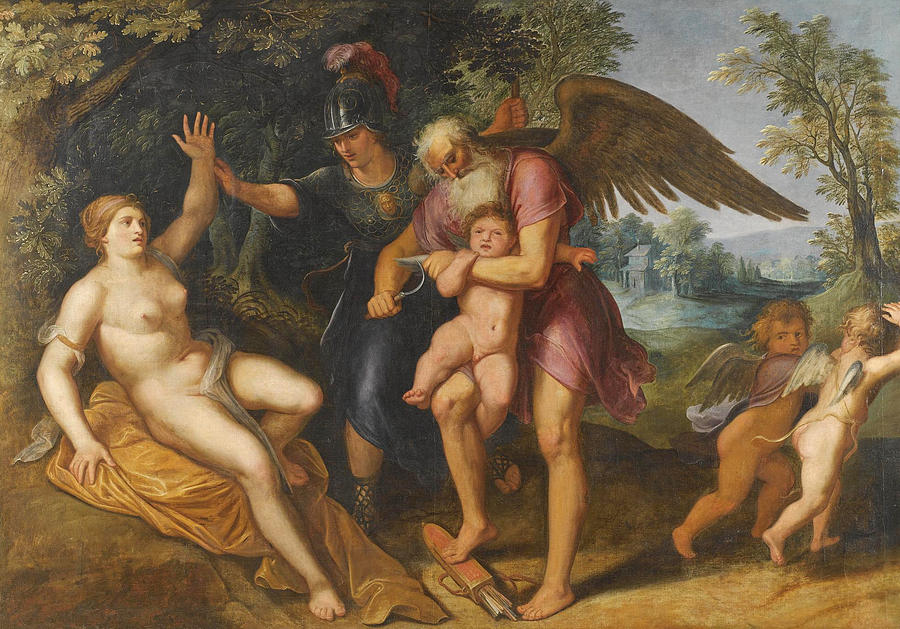
After Rhea secretly gave birth to Zeus in Crete, to prevent Kronus from eating the infant, she handed Cronus a stone wrapped in swaddling clothes, also known as the Omphalos Stone, which he swallowed, thinking that it was his son, Zeus.
Once Zeus had grown up, he forced his father Kronus into puking out their children (Poseidon, Hera, Hades,etc.) and Zeus declared war on Kronos. He was said to have made him regurgitate the contents of his stomach in reverse order: first, the stone, which was set down at Pytho under the glens of Mount Parnassus to be a sign to mortal men, and then his two brothers and three sisters.”
The Titans were conquered by Zeus and cast into the pit of Tartarus reversing the shift in cosmological terms from being holders of heaven to bearers of the entire cosmos. According to Pindar and Aeschylus, the Titans were eventually released from the pit through the clemency of Zeus.
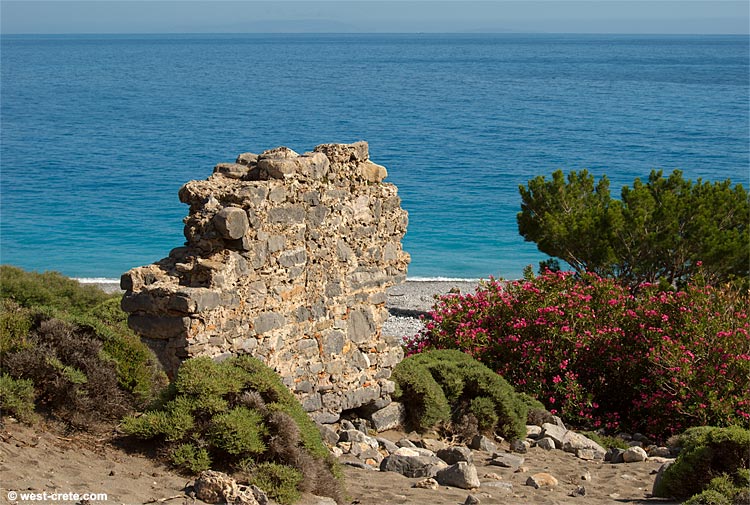
by Moe | Jun 10, 2021 | Gnosis, History of the Brotherhood
On the southwest side of the Greek island of Crete, near a pristine cove and virgin beaches, sits the ruins of a town Agia Roumeli, that was once called Tara (Tarrha, Tarra, Tarrhus, Tarros, – Greek: Τάρρα). An ancient city with an illustrious history that during the Greco-Roman period was one of the most important of all the Mediterranean.
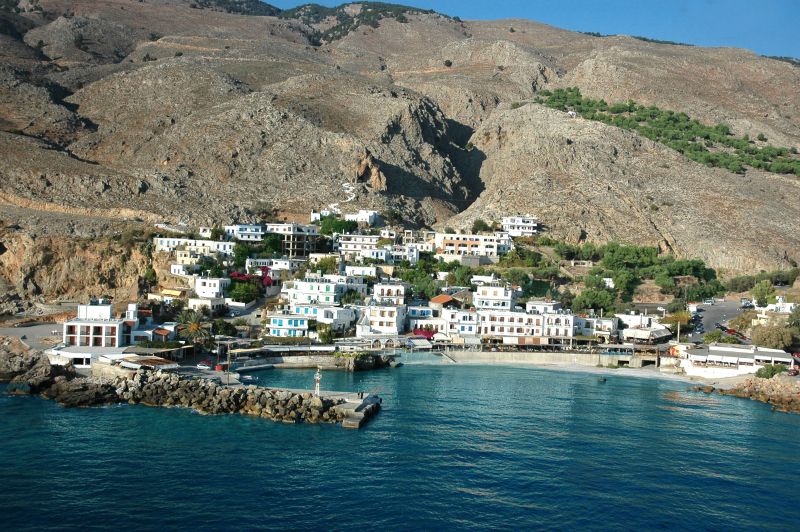
The natives and people of Tara were some of the most learned men in this part of the world. Writing in 19 A.D., Strabo tells us of its inhabitants’ enthusiasm for learning, especially for philosophy. In this respect, he speaks of Tara as Tarsus and claims the city surpasses Athens and Alexandria and every other university town.
According to traditional history, Greek colonists from Sparta founded the city Taras after the mythical hero Taras. The earliest legends tell us that Apollo, after murdering Python, arrived in Crete at Delphi, which is associated with Tara to be cleansed through purgatorial rituals ministered by the “first priests of Apollo who were Cretans from the City of Gnosis – Knossos.”
Here dwelt the famous temple of Apollo, surnamed Tarrhaeus, and the Oracle of Delphi, near the Southern part of the Samaria Gorge. Outside their temple of Gnosis, it simply read, “Know Thyself and Nothing in Excess.” The place where the High Priest Carmanor (Karmanor) where Apollo’s purification was woven into the Greek myths of the god’s entry into Delphi, and in times of plague (COVID), Epimenides Gnosis and other Cretans were summoned by the Delphic oracle.
During the first centuries of the Greco and Roman empires, the Island of Crete and the city-state of Tara was a place of greatest importance to the Imperial Cults in the Mediterranean. It was famous for many hundreds of years because of its history, learning, university, beauty, people, and its central location near mainland Greece and Egypt to operate its powerful maritime fleets and mercenary armies of archers.
The spiritual and historical roots of Tara tell us it was once one of the most ancient powerful cities of all the Old World who ruled over the rest of the cities such as in Southern Italy and Rome that was known as “Magna Graecia (Greater Greece)” in the time Before Christ (BC) and early AD. It once had one of the most advanced governments and militaries with a powerful fleet of ships that included a field army of tens of thousands of men.
It was inhabited and fiercely contested over since time immemorial. Due to the richness of the landscape which provided an abundance of fresh water and wildlife for food and the excellent quality of its wood, Tara or Tarsus became the epicenter of the world and of religion as well.
A famous old town that I believe various historical accounts connects us to the cities Tarsus, Tarshish, Tyre, Tyanna, and Ataroth, which I have found are all the same city but with different names throughout the last 2,000 plus years.
In order to travel to this area of Crete, you will find that there are no roads or tourist industries in or around the sleepy town of Agia Roumeli. By design or fate. The only way to find the remnants of Tara is by boat or a very long hike.
It has just about disappeared from history, but a necropolis was once excavated there, and some ruins can still be seen of it on the eastern side of the river (which runs down through the Samaria Gorge). The exact area that I believe is the same river described Biblically concerning the Tarsus and the story of Saint Paul’s (Saul of Tarsus) hometown near the Cydnus River now called the river Tarraios, which was also located near the ancient village of Samaria, midway down the gorge. Mt. Tarsus would be the beautiful White Mountains.
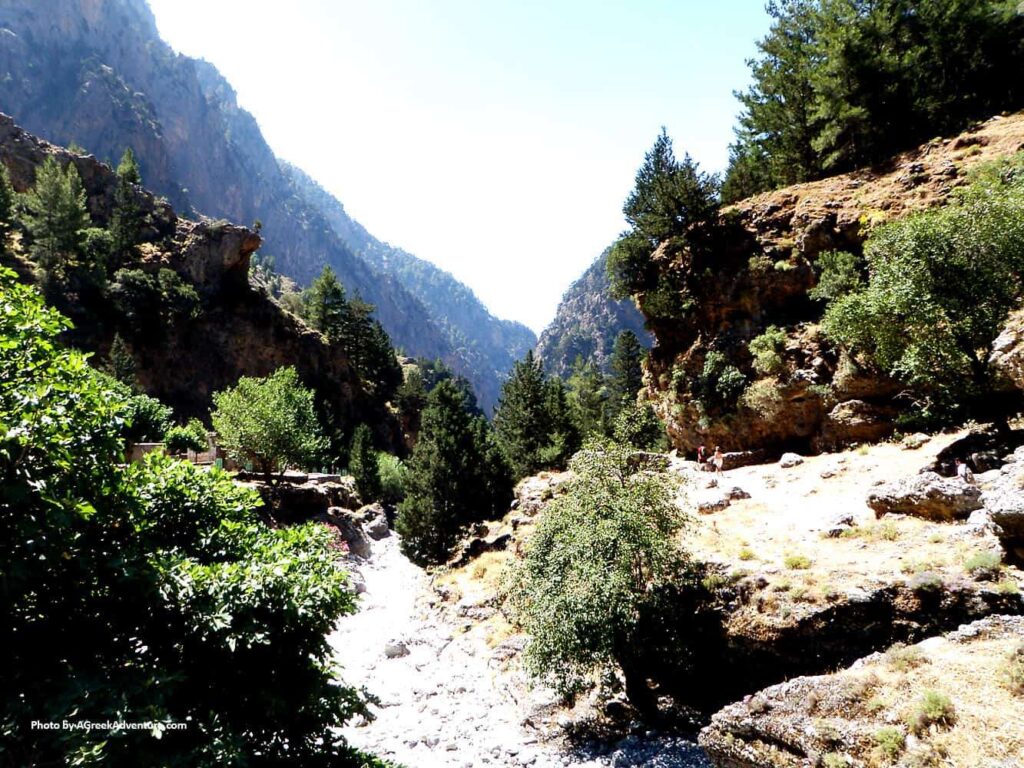
The river Tarraios dries up in summer but floods in winter, runs the length of the gorge and its mouth is at Agia Roumeli, formerly Tarra.
The recent photo below is from the lower part of the necropolis of Tara just above a rare “black sand beach” looking towards the Libyan sea.

HOW THE LEARNED MEN OF TARA MIGRATED TO ROME
What made the school of Tarsus different from other areas of the world according to Strabo was the fact that the entire student body was composed almost entirely of natives, who, after finishing their course, usually went abroad to complete their education and in most cases did not return home. Whereas in most universities, the students were mainly foreigners, and the natives did not show the same great love of learning.
In fact, Strabo emphatically states that Rome is full of Tarsians and Alexandrians and I believe they played a very important role in the formation of the early Roman Empire.
Among the famous learned men and philosophers were Stoics Antipater, Archedemus, Nestor, Athenodorus surnamed Cordylion, the friend and companion of the younger Marcus Cato also known as Athenodorus Cananites, (called Canaanites after the village of his birth), who was the tutor and friend of the first Roman emperor, Augustus Caesar and is credited with reforming the Tarsian constitution. Other philosophers of Tarsus were Nestor, a representative of the Academy, and tutor of Marcellus, Augustus’ nephew and destined successor, and of Tiberius, Plutiades and Diogenes;
Tara was the birthplace of philosophers, strategists, writers, and athletes such as Aristoxenus, Livius Andronicus, Heracleides, Iccus, Cleinias, Leonidas, Lysis, Sosibius, and Lucillus of Tarrha (or Loukillos). He commented on the Argonauts of Apollonius of Rhodes. In mythology, Chrysothemis, was the victor of the Pythian Games at Delphi and was also the son and poet of the High Priest Carmanor, who was from Tara as well.
Among the famous learned men and philosophers from Tara, Crete were people such as Paul the Apostle, Stoics Antipater, Archedemus, Nestor, Athenodorus surnamed Cordylion, the friend and companion of the younger Marcus Cato also known as Athenodorus Cananites, (called Canaanites after the village of his birth), who was the tutor and friend of the first Roman emperor, Augustus Caesar and is credited with reforming the Tarsian constitution. Other philosophers of Tarsus were Nestor, tutor of Augustus’ nephew, Marcellus.
It was distinguished for the culture of Greek literature and philosophy, so it was the rival of Athens and Alexandria. People such as Paul the Apostle were born here and it was the location of the first meeting between Mark Antony and Cleopatra that had occurred a long ago and was also home to the infamous, Cleopatra’s Gate.
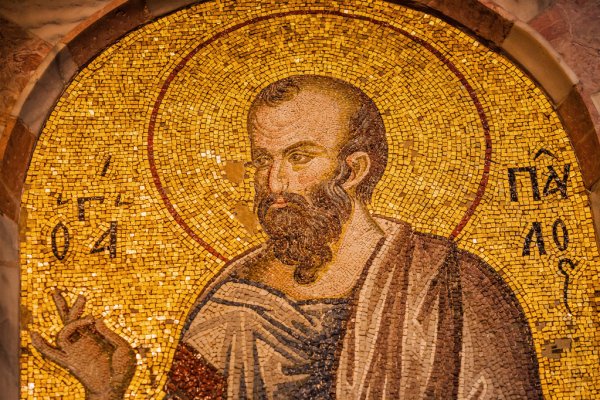
Some of the most famous people I have discovered from Tara AKA Tarsus were the highly influential Greek neo-Pythagorean philosopher, Apollonius of Tyana, who was educated at Tarsus in the Temple of Aesculapius and also lived and died on Crete. Apollonius was a student of the Pythagoreans whose teachings were held in the highest esteem and influenced both scientific thought and occultism for many centuries after his death.

Over the last 2,000 years, various legends told over this time about Apollonius in many different languages and by a plethora of authors tell of many places he had allegedly visited that all are spelled in a similar fashion and sound the same like Tarsus, Tarsia, Tyana and Tyre. Stories like Apollonius sails from Tyre to Antioch. In Tarsia, He is carried by pirates from Tarsus; Apollonius returns to Tyre; Apollonius sails to Tarsus; Apollonius returns from Egypt to Tarsus . D. Apollonius sails to Cyrene, etc…
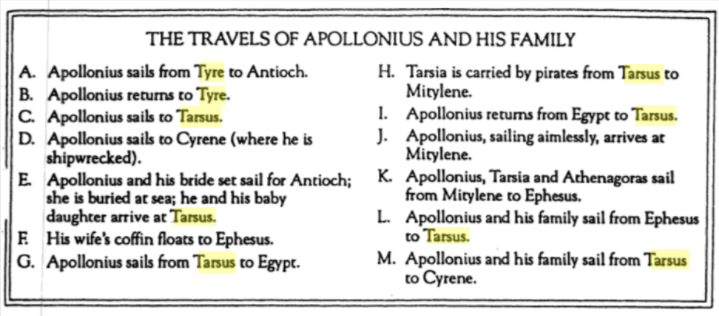
Another famous Taraseian from Tara was Archytas, a Pythagorean and ruler of Tara for seven years. He was an esteemed member of the Pythagorean school for his wisdom and virtues and was famous for being the founder of mathematical mechanics, as well as a good friend of Plato. The Seventh Letter of Plato asserts that Archytas attempted to rescue Plato during his difficulties with the Greek Archon Dionysius II of Syracuse.
I also find it interesting that many of these philosophers from Tara, Tarsus, or whatever you want to call the town were also resemble one another as if they were related by blood.
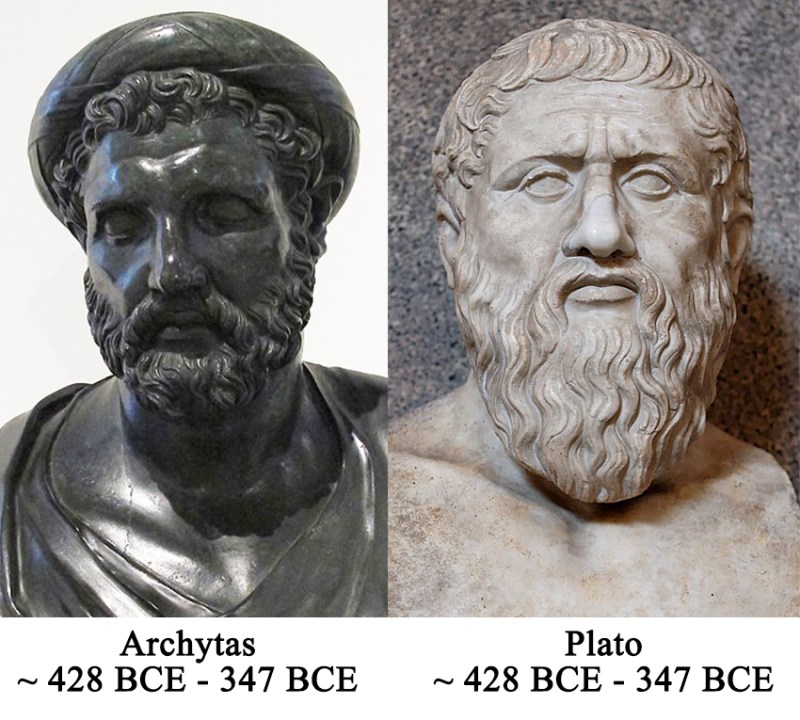
Under the rulership of Archytas, the government of Tara reached the apex of its development with a political hegemony over the other Greek colonies of Magna Graecia in southern Italy and one of the largest cities in the world, with a population estimated up to 300,000 people. Strabo associates Archytas with the flourishing of Tara and also its military might. In his honor, a crater on the Moon is named Archytas, and just to the southwest, we find his friend, the dark-floored crater Plato.
Due to its history and importance, the city of Tara had become one of the most esteemed and powerful cities in all the Mediterranean from 500 BC onwards which is reflected by its historical alliances and foreign policy. Tara belonged to a federation of Cretan cities composed of Lissos, Syia, Pikilassos, Hyrtakina, and Elyrus (Elyros) who are knowns as the Elyrians (Illyrians). Pausanias tells us how the people of Elyrus in Crete sent a bronze goat to Delphi; “ The goat is suckling the infants Phylacides and Philander, who were said to be the children of Apollo by a nymph Acacallis, whom Apollo visited in the city of Tara.
In later times, we find Tara signed an important agreement cementing an alliance with the neighboring Cretan City of Pergamon through King Eumenes II in 170 under the Attalid dynasty. Eumenes (B.C. 196-159) of Pergamon was the son of Cretan King and friend of the Romans, Attalus (B.C. 241-197).
In the Scripture, the original city of Pergamon is also known as the throne of Satan via Revelation 2:12 “Pergamos – Where Satan’s throne is.” Pergamon was originally located on the Island of Crete approximately 18 miles inland from the west coast. It lies opposite the Island of Dia (Cos, Chios, Patmos) to the west of Mount Ida, and Knossos was as well. It was said to be on the river Caicus almost halfway between Smyrna on the south, and Troy on the north. Pliny places it between the city of Sidonia (Cydonia) and the city of Kiasmos.
Pergamon was also home to the Temple of the ancient Greek God of wisdom, medicine, healing, rejuvenation, and physicians known as ‘Asclepius’. His temple was known as the Sanctuary of Asclepius which was one of the most famous schools, libraries, and medical centers (hospitals) ever known in the ancient world.
Under Augustus Caesar’s rule, the first imperial cult was established in the province of Asia was in Pergamon. Pliny the Elder refers to the city as the most important in the province and the local aristocracy continued to flourish in power up until the 1st century AD.
Lawyer and author, Robert Pashley was the first modern archaeologist to find the location of the city of Tara and investigate it. Pashley was one of the modern foremost experts of Cretan culture in the first half of the nineteenth century. He was the also first person to discover the location of the ancient buried city of Sidonia (Cydonia). At the time of Pashley’s arrival on Crete, it was under Muslim-Egyptian administration so I would assume much of this early history and Biblical secrets he discovered were suppressed. He published his Great Work in the two-volume book, “Travels in Crete.”
The appellation of “tar” to their founding and sister cities was preserved in the names of ancient places such as Tara in Ireland. Home to the Hill of Tara, which is an ancient ceremonial and burial site near Skryne in County Meath, Ireland. According to ancient tradition, it was the inauguration place and seat of the High Kings of Ireland. It was here you find like on Crete, learned me who are known as the Ulam (Ollam) of Mulah and their king who founded Ireland’s first University.
King Ollam is mentioned in the “Annals of the Four Masters,”, as a sage and law-giver and was said to have founded a College of Ollams at Tara, or a ‘School of the Prophets” who ordered the sacred records to be kept at Tara. “These form the basis of ancient Irish history.” (Annals of the Four Masters, note p. 297.) There was actually a famous college at Tara called the Mur Ollam han, or the House of the Learned Four Masters.
In England, we find the city of Tarring, now West Tarring, in West Sussex, which was founded by King Athelstan who is credited with starting Freemasonry in England. When the Normans conquered the country, they took over the governorship and this is reflected in history as being given by the King to the archbishops of Canterbury in the 10th century. Another sister city to Tara, Crete is the coastal city of Tarifa, Spain, and the most famous of all is the ancient city of Rome once called Tarentum and today is known as Terracina, Italy, which is said to have been built by colonists from Crete to name a few.
Early Greek tradition relates that when Taras was shipwrecked, his father rescued him by sending a dolphin which he rode to traverse the sea from the promontory of Taenarum to the south of Italy. Brought ashore, Taras founded Tarentum which was named in his honor. According to Pausanias, he was worshiped as a hero who named both the city and the river, Taras after himself.
According to the Harpers Dictionary of Classical Antiquities, dated over 100 years ago in1898;
“The town of Tarentum consisted of two parts, viz.: a peninsula or island at the entrance of the harbor, and a town on the mainland, which was connected with the island by means of a bridge. On the northwest corner of the island, close to the entrance of the harbor, was the citadel: the principal part of the town was situated southwest of the isthmus.
The modern town is confined to the island or peninsula on which the citadel stood. The neighborhood of Tarentum produced the best wool in all of Italy and was also celebrated for its excellent wine, figs, pears, and other fruits. Its purple dye was also much valued in antiquity.”
A place that I believe was a sister city to Tara, Crete, and also the exact location of the Temple of Jupiter Anxur (Italian: Tempio di Giove Anxur).
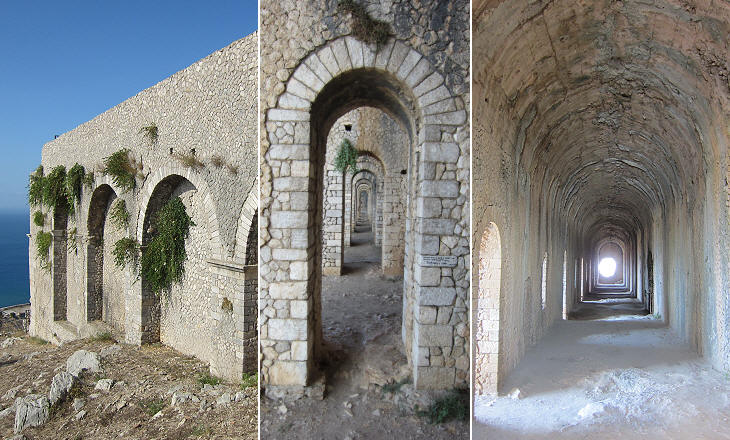
The modern name of Tara I have also found is associated with the Biblical Tarsus, which is famously associated as the native place of the Apostle Paul (Acts 22:3) who is also known as Saul of Tarsus, which he claimed was “a citizen of no mean city” (Acts 9:11; Acts 21:39). It stood on the banks of the river Cydnus, about 6-10 miles north of the Mediterranean. Like Tara, it was distinguished for the culture of Greek literature and philosophy, so it was considered the rival of Athens and Alexandria.
Paul, I have connected with Saul and Tyre. He is called the first King of the United Kingdoms of Judah and Israel and he can also be connected to the first King of Tyre (Byblos or Giblim) whose name was Abibalus who I have tied to Hiram Abiff that then connects us to Obed or Obediah of whom both are famously known as “The Widow’s Son.”
Tara may also be associated with the coastal village of Aghios Pavlos (“Saint Paul”) in whose name a small church was built there (first in Byzantine times, then restored in the 1960s), which is a natural port near the southernmost point of Crete south of Rethymnon city, west of Agia Galini, and very close to the tip of Cape Melissa. Some Biblical scholars state that Apostle Paul, landed at the harbor so-called Fair Havens here to preach the Christian faith in Crete.
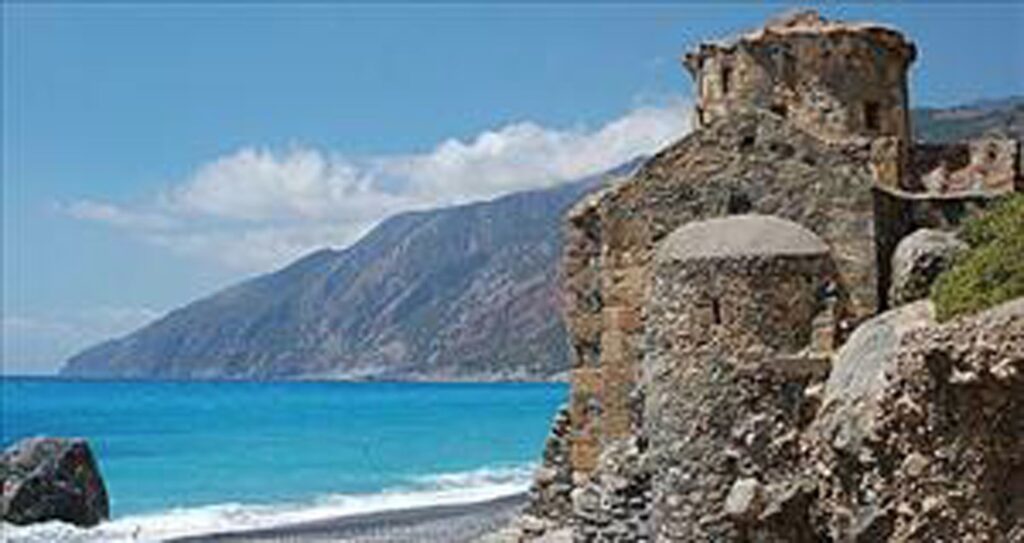
This makes perfect sense given the fact that Aghios Pavlos has one of the most sheltered bays on the coast with some of the most beautiful green and deep waters you have ever seen. The harbor and beaches here are also well-hidden and peaceful, where just above the pristine beach, you can witness for yourself the small old church of Saint Paul. The beach here has fine dark-colored pebbles with crystal clear blue waters. This area is specially protected from the winds by the high mountainous massive on the west and the north.
During this time of Pompey (67 BC), Tarsus was made the capital over the Roman province of Cilicia, and who we know now as the Jews began to receive Roman citizenship. Antony, who controlled the eastern provinces, declared the city free in 42 BC. Tarsus continued to receive special privileges under Augustus, who exempted the city from imperial taxation because Athenodorus, his teacher and friend, was a Tarsian. Tarsus grew into a cultural and intellectual center. Stoic philosophers like Athenodorus, Zeno, Antipater, and Nestor lived in the city in the 1st century AD.
The gate of Cleopatra, also called the “Sea Gate,” still stands today, but poorly restored and in Turkey like many of Crete’s old stones. Legend has it that Cleopatra sailed up the Cydnus river disguised as Aphrodite and came through this famous gate in 41 BC on her way to meet Mark Antony. Saint Paul had witnessed this event.
You will often find the name Tarsus associated with another name for Crete which is Cappadocia. These various name changes were done I believe to conceal the history and identity of the island from its descendants who were more often than not a serious political problem for whomever ruler ruled the region.
It was said that Julius Caesar passed through the city in 47 B.C. on his march from Egypt to Pontus, and was enthusiastically received. Later with the assignment of the East to Antony’s administration, Tarsus received the position of an independent and duty-free state (civitas libera et immunis) and became for some time Antony’s place of residence. This privileged status was confirmed by Pompey, Caesar, Antony and Augustus granted that honor for themselves and, as a consequence, for their descendants.
In reward for its exertions and sacrifices during the civil wars of Rome, Tarsus was made a free city of Augustus.
the biblical name, Ataroth, one of the stations on the southern frontier of the tribe of Ephraim, close to the territory of the tribe of Benjamin ( Josh . xvi . 5 , 7 ; xviii . 13 ; and xxi . 18 ). Their emblem is the wolf who according to ancient Roman mythology, a she-wolf was responsible for helping rear up the founders of Rome, Romulus, and Remus which is symbolized with the Capitoline Wolf (Italian: Lupa Capitolina), which is the main symbol of Rome.
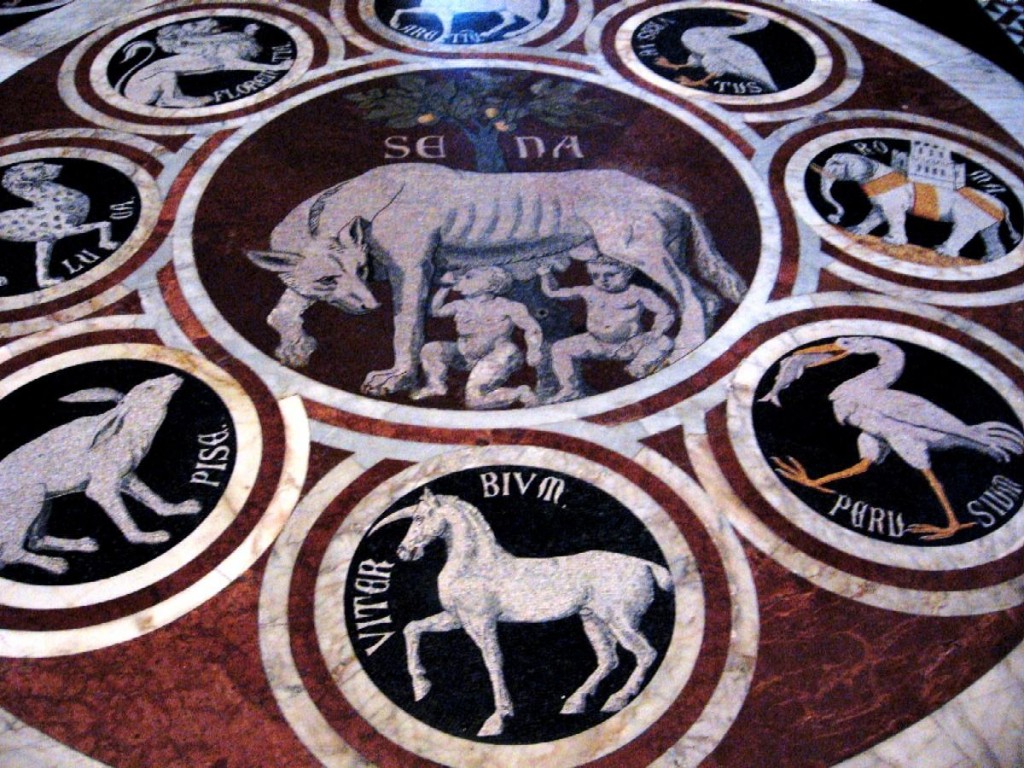
In the 7th century A.D., the Muslims conquered the island of Crete forcing the Byzantine rulers and Cretan natives to flee and in the 17 century, it fell again, this time into the hands of the Turks.
Finally, it was from the ancient shores of Tara/Tarsus that we know of today as Agia Roumeli that the Greek Government with King George left for Egypt in May 1941, after the fall of Crete to the Germans.
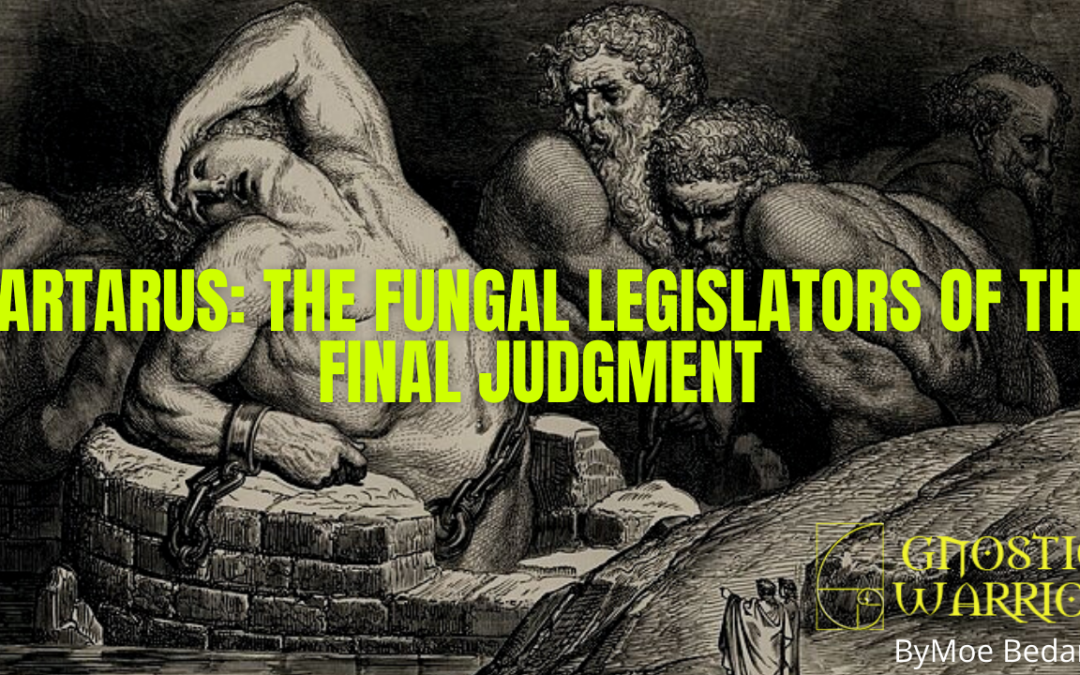
by Moe | May 28, 2021 | Demons, Hell, Toxic Mold
“For if God did not spare angels when they sinned, but cast them into Tartarus (hell) and committed them to chains of gloomy darkness to be kept until the judgment.” (2 Peter 2:4)
The teachings of Hell as a place of torment for sinners and the damned in Christianity come down to us originally from the Ancient Egyptians, Phoenicians, Greeks, and Romans. In Ancient Greece with some of the Greatest Philosophers of all time, from the era of Homer to Hesiod to Plato, this Tradition and what I contend is a theological science about a spiritual prison for humans called Tartarus (Tartaros) was fully developed.
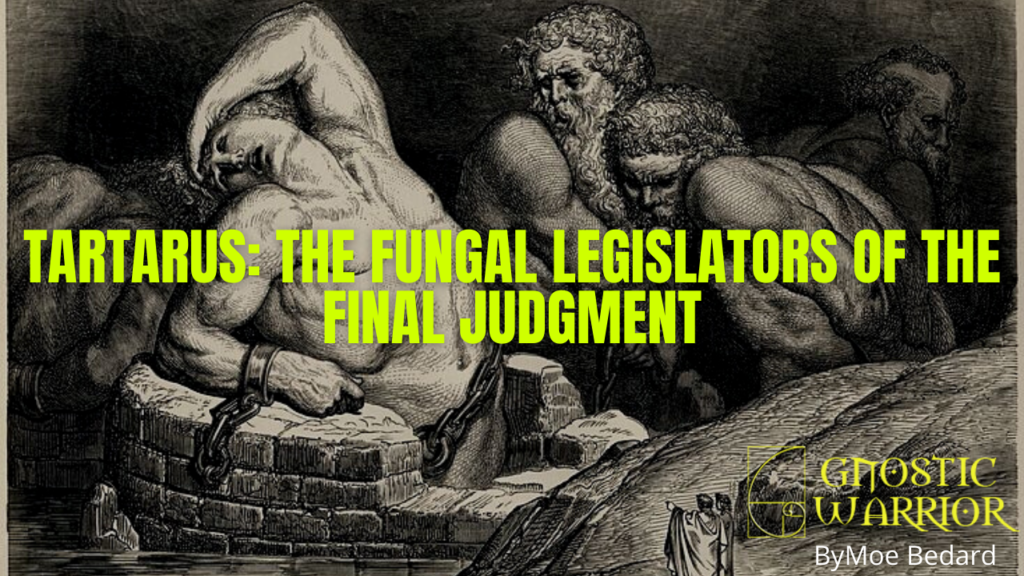
In the Scripture, Tartarus (Tartaros) is said to be the place where 200 fallen Watchers (angels) are imprisoned in an underground abyss reserved for demons, sinners, and the dead. In Enoch, we learn that God placed the archangel Uriel “in charge of the world and of Tartarus” (20:2).
Uriel is the angel “over the world and Tartarus” (ho epi tou kosmou kai tou tartarou), and as such, the conductor to Enoch in the world below secrets of which he explains. In the lost “Prayer of Joseph,” Uriel is the angel who wrestles and converses with Jacob and knows the secrets of heaven, and he is entrusted with the judgment of the Titans.
The meaning of the name Uriel (Ouriel) is “fire or flame of God” or “my light is God”)
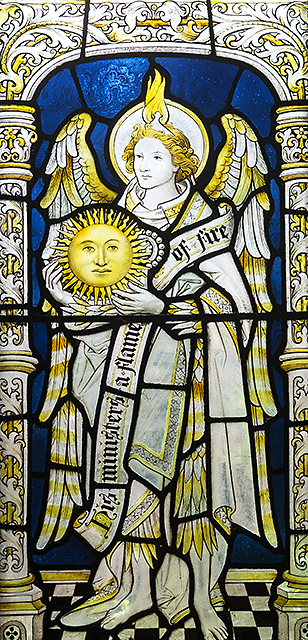
Tartarus in Greek mythology is the deep abyss and a type of underground dungeon of torment and suffering for the wicked and as the prison for the Titans and in later myths, for mortals who committed unforgivable sins. According to the Greek poets, Homer and Hesiod, Tartarus is a type of spherical force that reaches the great cosmic pit beneath the earth.
It is located “as far beneath the house of Hades as from earth the sky lies, and he is both a deity (god or force) and a place in the underworld.”
The Greeks imagined the cosmos to have been egg-shaped or spherical, and Tartarus was said to have been an inverted dome with the upper half of this sphere forming the dome of heaven, whilst the bottom half formed the pit of Tartarus.
In Homer’s Iliad (c. 8th century BC), Zeus asserts that Tartarus is “as far beneath Hades as heaven is above the earth.” According to the Homeric Hymn to Hermes, The God of Light, Apollon threatens to cast the infant god Hermes into Tartaros for stealing his cattle;
“For I will take and cast you into dusky Tartaros and awful hopeless darkness (zophon), and neither your mother nor your father shall free you or bring you up again to the light, but you will wander under the earth and be the leader amongst little folk (shades/ghosts of children in Hades).”
Hesiod (c. 700 BCE) depicts it as Misty Tartarus’, stating that it was “as far below the earth as heaven is from the earth” (722-25). He describes Tartarus “as a vast chasm, both dismal and dank and a place of decay,” and states, “Tartarus is one of the first beings to have emerged at the creation of the universe and was the opposite of Gaia (Earth).”
Hesiod describes it further as the unfruitful sea (pontos) where there are shining gates and an immoveable threshold of bronze having unending roots, and it is grown of itself. And beyond, away from all the gods, live the Titans, beyond gloomy Khaos.” He says that the edge of the cosmos is where the flat disc of the earth meets the descending dome of the sky and the ascending walls of the pit of Tartaros.
“The sky-dome and Tartarean pit surround the cosmos in an egg-shaped shell with Tartaros descending as far beneath the earth as the sky rises up above it.”
According to Plato’s Gorgias (428/7-348/7 BCE), the souls who were deemed impious and unjust by the judges of the dead (Rhadamanthus, Aeacus, and Minos), would be sent to Tartarus and eternally damned. In his Phaedo, Plato states that all of the rivers run through the chasm of Tartarus, and then they flow back out of it through the earth.
Roman mythology describes a pit inside extending down into the earth twice as far as the distance from the lands of the living to Olympus. The twin sons of the Titan Aloeus were said to be imprisoned at the bottom of this pit.
Tartarus is also considered a primordial force or God and the unbounded first-existing entity from which the Light and the cosmos are born. He is described as a deity or the God of Abyss and ruled with his sister, Gaia, the Goddess or first Mother of the earth. He was the son of Aether and Hemera, who descended from chaos – the first God.
Meaning, he was considered as existing at or from the beginning of time who came from the stormy pit of Tartaros that lies beneath the foundations of the earth.
In ancient Orphic sources and the mystery schools, Tartarus is also the unbounded first-existing entity from which the Light and the cosmos are born. According to Plato, Tartarus is the place where souls are judged after death and where the wicked received divine punishment. (Plato’s Gorgias)
Virgil describes Tartarus as expansive, surrounded by three perimeter walls, beyond which flows a flaming river named “the Phlegethon. To further prevent escape, a hydra with fifty black, gaping jaws, sits atop a gate that screeches when opened. They are flanked by adamantine columns, a substance that, like a diamond, is so hard, nothing can cut through it.
Virgil had written, “[The ghost of Anchises appears to his son Aeneas in a dream :] ‘Approach the nether halls of Dis [Haides], and through the depths of Avernus seek, my son, a meeting with me. For impious Tartarus, with its gloomy shades, holds me not, but I dwell in Elysium amid the sweet assemblies of the blest.” (Virgil, Aeneid 5. 731)
Carl Jung had written in The Red Book about his experience of descending into Tartarus where the color black/nigredo plays a predominant role in Jung’s initial plunge into Hell where this black water or dirt covers the cave, and he witnesses a subterranean Sun or fire which he has been tasked with to capture.
Jung describes his visions in Tartarus as a hellish landscape with a blackness/nigredo substance up to his ankles with pools of red blood, terrible noises, screams, and dead bodies floating within it as black scarab floats by on the dark stream.
There seems to be an exit or a way out of this Hell via a red stone that he first symbolized as a subterranean Sun or fire covering an opening, which Jung removes and holds it in his hands. Jung had written;
“I see a gray rock face along which I sink into great depths. I stand in black dirt up to my ankles in a dark cave. Shadows sweep over me. I am seized by fear, but I know I must go in. I crawl through a narrow crack in the rock and reach an inner cave whose bottom is covered with black water. But beyond this, I catch a glimpse of a luminous red stone which I must reach. I wade through the muddy water. The cave is full of the frightful noise of shrieking voices.
I take the stone, it covers a dark opening in the rock.
I hold the stone in my hand, peering around inquiringly. I do not want to listen to the voices, they keep me away, but I want to know. Here something wants to be uttered. I place my ear to the opening. I hear the flow of underground waters. I see the bloody head of a man on the dark stream. Someone wounded, someone slain floats there. I take in this image for a long time, shuddering. I see a large black scarab floating past on the dark stream.”
In the Secret Teachings of All Ages, Manly P. Hall connects Tartarus with the concepts of the monad – as the origin or the first thought and all thoughts as the beginning and end of all. It is the receptacle of matter which produces chaos and also the planet Jupiter which he states, “the great power which abides in the center of the universe and controls the circular motion of the planers about itself.”
Hall had written;
Monad–1–is so-called because it always remains in the same condition–that is, separate from the multitude. Its attributes are as follows: It is called mind, because the mind is stable and has preeminence; hermaphrodism, because it is both male and female; odd and even, for being added to the even it makes odd, and to the odd, even; God, because it is the beginning and end of all, but itself has neither beginning nor end; good, for such is the nature of God; the receptacle of matter, because it produces the duad, which is essentially material.
By the Pythagoreans, the monad was called chaos, obscurity, chasm, Tartarus, Styx, abyss, Lethe, Atlas, Axis, Morpho (a name for Venus), and Tower or Throne of Jupiter, because of the great power which abides in the center of the universe and controls the circular motion of the planers about itself.
Monad is also called germinal reason because it is the origin of all the thoughts in the universe. Other names given to it were: Apollo, because of its relation to the sun; Prometheus, because he brought man light; Pyralios, one who exists in fire; geniture, because without it no number can exist; substance, because substance is primary; cause of truth; and constitution of symphony: all these because it is the primordial one.”
In the Greek Comedy, Aristophanes, Frogsdated from the 5th to 4th B.C. had stated:
“[Aiakos (Aeacus), the gatesman of Haides, threatens the god Dionysos with imprisonment in the dungeons of Hell :] ‘The black hearted Stygian rock and the crag of Akheron (Acheron) dripping with gore can hold you; and the circling hounds of Kokytos (Cocytus) and the hundred-headed serpent (ekhidna) [probably Typhoeus] shall tear your entrails; your lungs will be attacked by the the Tartesian Eel (Myraina Tartesia) [probably Ekhidna], your kidneys bleeding with your very entrails the Teithrasian Gorgones will rip apart.'”
Here is some more text from the Homeric Hymn to Pythian Apollo;
“Hera prayed, striking the ground flatwise with her hand, and speaking thus : ‘Hear now, I pray, Gaia (Gaea) and wide Ouranos (Uranus) above, and you Titan gods (Titanes theoi) who dwell beneath the earth about great Tartaros, and from whom are sprung both gods and men! Harken you now to me, one and all.'”
THE MEANING & ETYMOLOGY OF THE WORD TARTARUS
The word Tartarus is composed of the words “tar, tar, and “us or os”
According to Webster’s Dictionary, Tar is found in the Bible to mean “a thick, black, viscous liquid obtained by the distillation of wood, coal, etc., and having a varied composition according to the temperature and material employed in obtaining it.”
It is related to the word ‘atar,’ which means [אָטַר] verb shut up, close, bind or enclose (Arabic bend, curve, what surrounds, encloses. It is related to the word tardemeh תַּרְדֵּמָה noun feminine deep sleep; — absolute ׳ת Genesis 2:21 +; construct תַּרְדֵּמַת 1 Samuel 26:12; — deep sleep, usually with נָפַל + עַל person, and usually by supernatural agency: עַל ׳ת ׳א ׳וַיַמֵּל י Genesis 2:21 (J; ᵐ5 ἔκστασις), נָָֽפְלָח עַל ׳ת Genesis 15:12 (J; ᵐ5 id.), Job 4:13 = Job 33:15 (ᵐ5 [δεινὸς], φόβος), so ׳תַּרְדֵּמַת י 1 Samuel 26:12 (ᵐ5 θάμβος, the result of slothfulness (על and person omitted) Proverbs 19:15; figurative for insensibility of spirit, ׳רוּחַ ת ׳נָסַךְ עֲלֵיכֶם י Isaiah 29:10.
The Hebrew word is radam, which means “to fall or fall into, heavy sleep” related to [רָדַם] verb Niph’al of sleep of death Psalm 76:7; stunning effect of awe and dread Daniel 8:18; Daniel 10:9 (both + אָ֑רְצָה [ וּפָנַי ] עַלמָּֿנַי.
Matar means to kill.
The meaning of the word tar (πίσσα) tar is also pitch and spelled in Greek as pissa, which is another word for pitch and bitumen. These words are all synonyms with “coal or creosote.”
In the Scripture, this Tar is related to a particular substance called “slime, Bible Slime or Bitumen.” It is sometimes used to mix in with the brick and mortar to build the “Tower of Babel,” and is made in what was called “tar pits” and sometimes the “lake of Sodom” in ancient Babylonia.
The word slime is also variously translated as meaning “bitumen” in the Latin Vulgate and as “chomer or chemar” in the Hebrew Bible, and Strong’s Hebrew lists the word for Tar as chemar.
Herodotus, the Father of History, tells us that bitumen is the “product of the decomposition of vegetable and animal substances.”
Herodotus had written;
“Bitumen is “the product of the decomposition of vegetable and animal substances. It is usually found of a black or brownish-black color, externally not unlike coal, but it varies in consistency from a bright, pitchy condition, with a conchoidal fracture, to thick, viscid masses of mineral Tar.” (Encyc. Brit.)
This reference by Herodotus clearly shows us that this “slime of bitumen” is a product of decomposition of both vegetables and animals. When we look to modern science for the definition of decomposition, we see that it means;
“the state or process of rotting; decay of organic waste.”
Now that we understand that the meaning of the word “Tar” is decay and decomposition of vegetables and animals, including we, humans, let’s examine the next word in Tartarus or Tartaros – “us or os.”
The word us means both we, and in a historical sense, it is a group of people with a like mind and similar or the same ideas. Traditional Greek authors would call this “nous,” which is equated with the “human mind ie, intellect, or intelligence – necessary for understanding what is true or real.”
Concerning Tartarus, I contend that this “nous or mind” is connected to what classical Greek writers had called a primordial force, which in reality is the earth’s biosphere or “little nous.” Also, my theory is that our second brain may be our first developed lizard or fungi brain that can be taken over by this same force if we transgress against the laws of being human. I believe these laws have been passed down to us by the lawgivers and prophets who have gone before given us the spiritual Gnosis, world religions, and ancient mysteries that teach us about this hidden reality of our human existance.
A type of ancient hive mind and legislator that operates through the very microorganisms ie, Tar Tar, Slime, Bitumen, and the earth’s internet, which controls its functions and legislates the human parasites/demons much better than any government or military could ever imagine.
TAR TAR US – FUNGAL LEGISLATORS OF THE FINAL JUDGEMENT

by Moe | Apr 26, 2021 | Gnosis, Mystical Christianity
The Christian concept of illumination or enlightenment would result from being Baptized by the Heavenly Fire that is also known as the Light, Holy Fire, and Spirit. We learn that God is associated with this Light when he called into being on the first of the six days of creation, “Let there be light;” and there was light” and the word of God is “a light” (Psalm 119:105) and he is known as “the Father of lights” (James 1:17).

The creation of light was the first step in creation and throughout the Scripture, Fire is used to symbolize this Fire via the heavenly Father’s presence (Ex. 3:2), approval (Lev. 9:24), protection (Ex. 13:21), purity (Isa. 6:1-8), enablement (Acts 2:3), and, even judgment, for “Our God is a consuming fire.” (Hebrews 12:29)
It was through this sphere of Light agency that God brought humans illumination. This was performed by what is called “Baptism or Baptizing.”
Early Church Baptism is frequently described as “illumination” and there are many passages that describe being connected to God via the Light as being like a candle in the dark leading the initiate as we read in Job 29:3, “When his candle shined upon my head, and when by his light I walked through darkness,” or a special light that allows us to see the Light and connect to it for it is the “fountain of life.” (Psalm 36:9)
This Baptism of Light or Fire from God had a direct force upon their organs of sight in which the world that was once dark is now rendered visible or luminous due to the new power of our perception via the spiritual vision. In this sense, God becomes the second sun, a star, a candle, a lighthouse, etc., who illumines the mind (spiritual illumination) of humans which is special knowledge (Gnosis), and information that equates to enlightenment.
This is why Christ, who was called the “Son of God” was also known as a fire-starter for he comes “like the fire of a furnace…, like one that smelts and purifies as silver and as gold.” (Malachi 3:2-3) He is the “Sun of righteousness,” and “the light of the world,” (John 1:9 8:12) and he came to baptize with the Holy Spirit and with Fire (Mt. 3. 11 Lk. 3. 16), and Christ once said, “I came to cast fire upon the earth and how I wish it were already kindled.” (Lk. 12. 29) John the Baptist was a “burning and a shining light” (John 5:35), and of all true disciples are called “the light of the world” (Matthew 5:14).
Hence, True Christians are also considered lights because they are connected to God, which as a result, they become in communion with the Holy Spirit as Sons and Daughters of God and heaven, which is full of Light. (Revelation 21:23-25)
When we baptize, this means to immerse something or someone into some type of fluid, substance, or thing. For example, when a person is accepted into the Catholic and Christian religion as a new member of the Church, an ancient ceremony of initiation is performed in which they are “baptized” by water to signify a type of spiritual cleansing that figuratively washes away the old life and sins making them “newly born or risen” or what is sometimes called, “born again.”
John was called “John the Baptist” because he practiced water baptism to signify a person’s repentance from sin and committing their lives to God in which they are forgiven, and he was the person said to have baptized Jesus Christ. We read in Mark 1:4, “John the Baptist appeared in the wilderness, preaching a baptism of repentance for the forgiveness of sins and John tells us that One will come who is more powerful than him and his water baptism in Mark 1:7, “And he began to proclaim: “After me will come One more powerful than I, the straps of whose sandals I am not worthy to stoop down and untie.
We learn in Luke 3:16 that this powerful entity or person can baptize you with the Holy Spirit and with Fire which John claims is much greater than a baptism by water. John answered all of them: “I baptize you with water, but One more powerful than I will come, the straps of whose sandals I am not worthy to untie. He will baptize you with the Holy Spirit and with Fire.”
These people would have a special Gnosis or knowledge via the Heavenly Fire that they receive from above or what is called “The One who comes from above (Heaven) is above all.” This is considered God-given wisdom in which they are “Illuminated by the Holy Fire and Spirit.” If this heavenly Fire from above illumined you, I contend that you would be considered part of the wheat, Sons or Daughters of God, and a true Christian who uses their Gnosis, reason, and lives to bring Light into the world.
This “Baptism of Fire” should be the goal of every genuine Christian. When I say Baptism, this act is not performed by a priest, but by their help, an initiate begins to live their lives by the Christian precepts based on human logic, reasoning, understanding, and the common good of all humanity.
(1) God (The Source of Light/Fire/Jupiter which provides Phosphorus i.e., Human Consciousness)
(2) Christ (Son of God i.e., Idea of Perfected Human Consciousness – Vitruvian Man – Spirt Over Matter)
(3) Christians (Belief in God and Baptized in the Light to emulate the Son of God i.e., Idea of Perfected Human
Consciousness)
(4) The Church (A communion of Teachers who assist believers to be Baptized into the Light/Fire/Phosphorus and Mind of God)
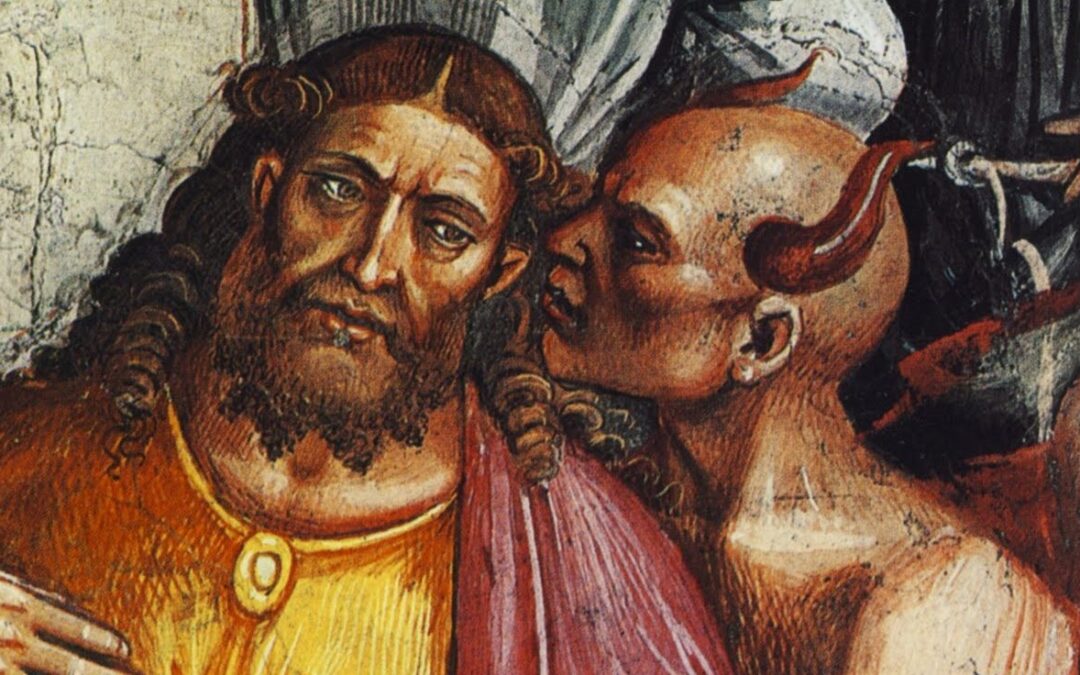
by Moe | Mar 13, 2021 | Meaning of Words, Mystical Christianity
“And it came to pass, when the king heard the words of the woman, that he rent his clothes; and he passed by upon the wall, and the people looked, and, behold, [he had] sackcloth within his flesh.” (2 Kings 6:30) Sackcloth within the flesh was called the “clothing of the false prophets”, who Zecharia says, “that the false prophets shall no longer prophecy in sackcloth.”
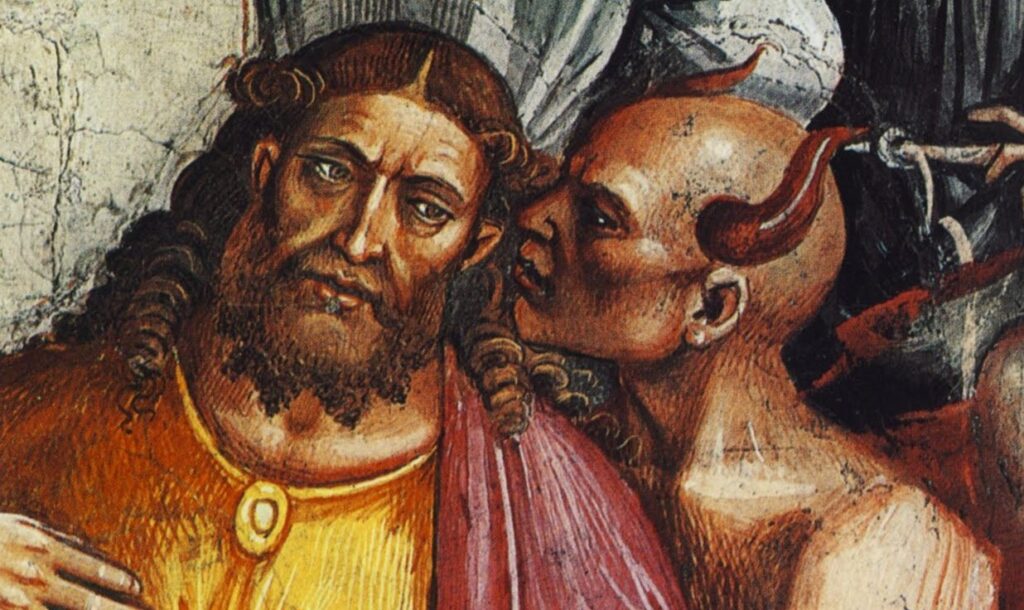
(Zech. xiii, 4) It was also speculated to be an article of clothing that was allegedly worn, but it was described as a blackish substance that I contend is a particular “genus of fungi/molds” that, with the help of the LORD of Hosts, was somehow supernaturally embedded within the flesh of people during times of trouble, pestilence, and calamities as it was said that sackcloth was “worn about their bodies,” not “worn on their bodies” and “within the flesh.“
In Revelation 11:3, we are told, “I will give power to my two witnesses, and they will prophesy one thousand two hundred sixty days, clothed in sackcloth” and in 6:12, (12-17), we learn the story of the sixth seal where Christ’s disciples are taught about wars (Revelation 6:6), famines and pestilences (Revelation 6:7), persecutions (Revelation 6:9) and in 6:12, these two witnesses are given white robes as the sun.
This legislative action and legal judgments, which refer to sackcloth girding people’s flesh, rotting, and the stench is interesting given the fact that it also has the ability to cover the sun and heavens with blackness as it is said in Revelation 12 “the sun black as a sackcloth of hair,” and Isaiah, “I clothed the heavens with blackness, I make sackcloth their covering.”
The LORD GOD of Hosts is often associated with forming/molding humans, this sackcloth and dust. We learn in Genesis 18:27; “to speak to the LORD which I am dust,” and Genesis 2:7 And the LORD God formed man of the dust of the ground, and breathed. “Then shall the dust return to the earth as it was: and the spirit shall return unto God who gave it.” (Ecclesiastes 12:7)
In the Scripture, we find that the profits were girded with Sackcloth. Job says, “I have sewn a sackcloth upon my skin and defiled my horn in the dust.” (Job 15) It also was on people when they were sick as an instrument of the LORD’s anger and used to “wrap the dead” during the burial process, and during good times, those who were clad in sackcloth tore it from their bodies and cast it from them. For this, gird you with sackcloth lament and howl. For the fierce anger of the LORD is not turned back from us. Jerome
There are also references to instead of a stomach, there is a girding of sackcloth and the bosom (mold in chest/lungs), and instead of beauty and people with well-set hair, people were bald, burning, and were branded. Instead of a sweet smell, there was a stink. Let me, please add that fasting and prayers seem to help these serious medical conditions and also not angering the LORD who was their de facto ruler.
In Psalms, “But for me, when they were sick, my clothing was sackcloth. I humbled my soul with fasting, and my prayer turned into my own bosom.” King James Bible; Instead of a sweet smell, stink; rather, rottenness, as translated in Isaiah 5:24 (compare the cognate verb in Leviticus 26:39). Instead of well-set hair baldness (compare above, ver. 17).
GIRDING MY LOINS
To put on sackcloth was done through what they called “to gird sackcloth about the loins” and had the ability to mend or be supernaturally sewn within the flesh to become part of the skin or human organism and somehow associated with the dust. The word is also mainly associated with the adjective of black or darkness, as if this sackcloth was made of such color.
To Gird the Loins with a Sackcloth is no easy feat. The loins of a human are the part of the body on each side of the spinal column between the hip bone and the false ribs or the upper and lower abdominal regions and the region about the hips.”
All these different Biblical references of sackcloth girding people on the day of destruction with descriptions of rotting flesh clearly indicate that sackcloth is something other than clothing or a robe that people wore. It also has the ability to gird us, surround us, and also stretch into the heavens with blackness, which sounds exactly like what modern science has described as “dark matter” that I have written about many times before. This is what I believe our ancestors had meant by the description of the sackcloth.
Please keep in mind that the LORD GOD of Hosts is considered different from the God of the Most High or El and be more of a legislator of the earth, including humans and hearts who issue punishments for sins laws to govern God’s people. The Jews call him Yahweh, Jehova, or Adonay, and the Christians, the LORD of who Jesus and Satan are his archetypes.
WHAT DOES SACKCLOTH MEAN?
It is obvious from the references above and what I will put forth below that this “sackcloth” is black or dark in nature but also has the ability “to gird people via their loins” and also reached up to the sun and cover the heavens in “blackness.” I have also found that sackcloth is associated with the “LORD GOD of Hosts and dust” and who brings the day of destruction that is coming on all this refined luxury where it was said that in great calamities, in times of deception, mourning, pestilence, sickness, and when the rule of the false prophets, there would be the stench of squalor rotting people’s flesh which would be “girded in sackcloths.”
What has always interested me about these passages was the reference to the word ‘sackcloth’ and the true meaning behind it because all of the interpretations and references never made any sense to me as it does now that I have uncovered the true meaning. For example, many interpreters claim the meaning of sackcloth was that it was a type of robe or dress that people had worn during the writing of the Scripture, but as I briefly stated above, I disagree. Also, the word sackcloth is a somewhat new Biblical word added by ‘Church Doctors’ to conceal its true meaning and is not the original word written in the Hebrew and Greek Scripture, which I will clearly reveal below.
The meaning of gird is to smite, strike or bind and can also mean to equip or encircle a person or part of the body. The original word in Hebrew is said to be ‘agar or chagar’ and also ‘azar,’ which similarly means binds, bound, encircle, gird, or girded. These words have nothing to with wearing a garment and or clothes. In the Book of Enoch, Azar or Azazael is one of the chiefs of the 200 fallen angels who instructed the Sons of God came in unto the daughters of men teaching them the magical arts.
As I explained in my article, “Azazael: The Science of the Seed of Satan,” these ancient teachings led to many Jewish Rabbis identifying Azazel or Azar with Sammael, the angel of death, the chief of the devils, the fallen archangel, and the seducer of mankind. Father of the Church, St. Basil, had said that the angels are “an airy wind, an immaterial fire” who are an order of intelligent creatures which is their elementary constitution according to another high author and the Christian Theologian Origen claimed that Azazel was the devil (‘Cont Cels.’ lib. V1. p. 305).
When studying the word agar, you will find that it is also “means mucilage, which is a thick, gluey substance produced by nearly all plants and some microorganisms.”
These microorganisms include fungi that use it for their locomotion, like Aspergillus Fumigatus, which uses extracellular release of mucilage for parasitic entrapment and fungal adhesion host, which has been well documented. Aspergillus causes the most fungal infections, diseases, infect crops and animals, resulting in more death worldwide every year, making this the true Korona Fungus that the LORD of Hosts may use to do its bidding.
An interesting synchronicity is that the Roman Catholic Popes and Catholic priests use an ‘Aspirgillum‘ named after the mold aspergillus to sprinkle Holy Water, which I contend originally had anti-fungal properties.
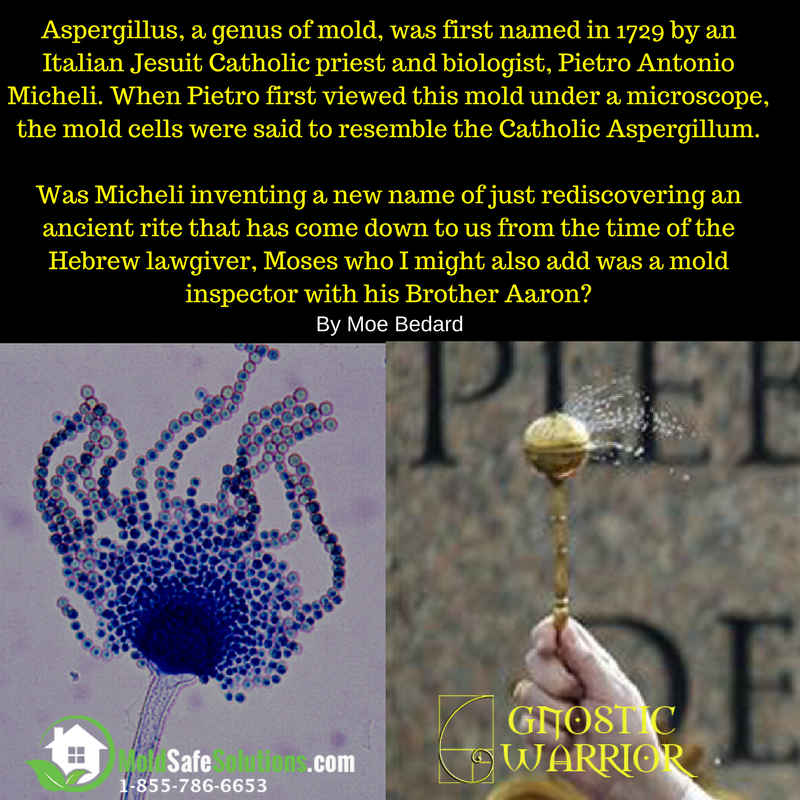
This agar AKA mucilage, is also known as “Extracellular mucilaginous material (ECMM)” and fungi use it for attachment of spores or mycelium to various substrates and protection. Scientists have found that certain species of fungi are covered by an amorphous mucilage that facilitates adhesion of the spore to the host cuticle and creates what they call a “mucilaginous spore matrix” to protects it against temperature extremes and may include the storage of nutrients used by the fungus during starvation. For example, “Micromorphology of extracellular mucilage,” which has been thoroughly documented in wood-decay fungi as I’m sure we will find out the same can be said for humans.
As I have explained before, these modern scientific teachings we can connect to the Christain concept of the sackcloth with the ancient Judaic exoteric teachings such as the Unholy Shell of Husk and may be related to the membrane spoken of in the Apocalypse of Abraham. This is a reference to the human mucous membrane or possibly a more recent discovery called the “Interstitium,” which has been described as “the largest organ we never knew we had,” and an organ that is so minuscule that it has escaped the discovery of the world’s greatest scientists until now.
These Scriptual teachings I believe we may find when we read On that day, were are told in Isaiah 22:12 “You built a reservoir between the walls for the waters of the ancient pool, but you did not look to the One who made it, or consider Him who planned it long ago. On that day, the Lord GOD of Hosts called for weeping and wailing, for shaven heads and the wearing of sackcloth. But look, there is joy and gladness, butchering of cattle and slaughtering of sheep, eating of meat and drinking of wine:
“Let us eat and drink, for tomorrow we die!”
In modern terms and when comparing these teachings to science, my understanding has been that it is the microorganisms within us that have the ability to gird people’s flesh when we sin and live in refined luxury, causing us to rot from the inside out i.e., fungal infections, and just about every disease with a Latin name we have no cure for but a medicine might fall into this category. These same said fungi also have been found 33,000 feet in the air to the moon, which would align with our ancestor’s teachings of clothed the heavens with blackness. I make sackcloth (agar/fungi/black matter) their covering. Hence, the KORONA FUNGI Apocalypse.
I believe that they just used different words. Due to the Babylonian dispersion, the confusion of tongues, and subsequent doctoring of the original Scripture, these translations were lost and or misconstrued. Possibly only to be found in the Vatican archives if they still exist.
This name “agar” is interesting given the fact that it is an ancient name going back to the time of the Phoenicians (Hebrews) and is also associated with “Divine birth,” Angels, and the Wilds Ass Man of the LORD.
In the Scripture, Hagar or Agar is Abraham’s concubine and the mother of his son Ishmael. She was a slave purchased in Egypt who became the maid to Abraham’s childless wife, Sarah, who gave her to Abraham to conceive an heir. When Hagar became pregnant, her meek manner changed to arrogance, and as a result, Sarah treated her so harshly that she fled into the wilderness.
There, by a spring of water, she was found by an angel of the Lord, who told her to return home and promised her that she would have many descendants through a son, Ishmael; he would grow up to be a “wild ass of a man,” in constant struggle with all other men. Hagar returned home to bear her child.” Ishmael was the first son of Abraham, according to the Bible, which is repeated in the Quran.
Hence, all other Apostles and saviors would have been a descendant of this “wild ass man” and who would struggle against the people of their day.
ETYMOLOGICAL WORDPLAY
Sackcloth is composed of the words’ sack, sak, sac or saq” and “cloth or clothe.” In Hebrew, the word sackcloth is translated to qadar, to be dark, blackish ones; to be ashy, ie Dark-colored; by implication, to mourn (in sackcloth or sordid garments) — be black(-ish), be (make) dark(-en).
The original meaning of sak means wet
Glucose decomposes this compound so that it Saccharin ( sak‘ ur – in ) . ( Saccharum + – in . ) n
Camlet’s Dictionary tells us that the name was also written in the Greek’ Girgashi, Girgesenos Girshanna
The name Geregesene is connected to the “country of the Gerasenes” (Mark 5:1 Luke 8:26) and the “The Demoniac of Gadara” where Jesus met and healed the demoniac from the tombs, and also the place the destruction of the swine, which was on the eastern shore of the Sea of Galilee.
It is in this passage we learn that the people of this area who are said to be clothed in sackcloth also this is Jesus’ hometown where they also have a big problem with demons, and unclean spirits because they have been bound by what is described as “fetters and chains,” and the chains at a particular mountain had been rent asunder by him, and they were called “Legion, for there were many.”
The word fetter is interesting to note given the fact that it means “a chain, shackle, or restraint on the foot which an animal or man was confined restrained or more appropriately, to bind or bound as in a way to “secure prisoners.” The word is variously associated with the slaughter of sinners and has the ability to “hedge” which means “to fence or boundary formed by closely growing bushes or shrubs.”
For example, we learn in Hosea 5:2, “And to slaughter sinners have gone deep, And I ‘am’ a fetter to them all,” and in Lamentations 3:7, “He hath hedged me about, and I go not out, He hath made heavy my fetter.”
If we are to examine the old Greek text, we discover in the Strong’s Concordance that the English word fetter was originally written in the Greek pous, which means “the ground or earth.” https://biblehub.com/greek/3977.htm. Pous is where we get the English pus which means “a thick yellowish or greenish opaque liquid produced in infected tissue, consisting of dead white blood cells, bacteria and fungi with tissue debris and serum.”
Gergesa was said to be a little town near Capernum which was also called Kerza or Gerza of which the Apostle Mathew allegedly wrote was next to Galilee.
Country of the Gerasenes:
The town itself is not named in Scripture and is referred to only in the expression, “country of the Gerasenes” (Mark 5:1 Luke 8:26, 37; see Westcott and Hort, The New Testament in Greek, Appendix, 11). This describes the district in which
Pliny in the 6th chapter of the 7th book of his Natural History, speaks of a mountain in Crete that had been overturned by an earthquake and that had uncovered the bones of a massive giant. Philodemos of Gadara (ca. 110-40 B.C.) reported another giant found on Crete that was 48 cubits in length; this would equate to 72 feet in length. These finds are interesting because the God Zeus or Jupiter was also educated and hid in a cave on a mountain called Mount Ida on Crete.
In times of mourning, they used girdles gashta, the Arabic also signifies “black mud” which was said to describe the soil or earth surrounding the Lake of Tiberias.






















